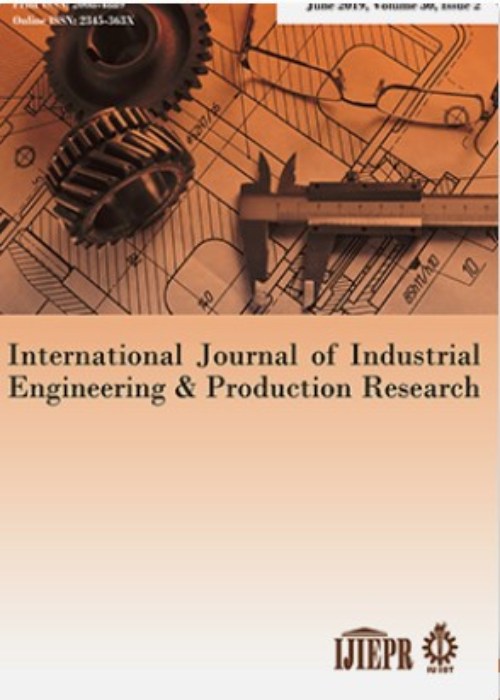فهرست مطالب
International Journal of Industrial Engineering and Productional Research
Volume:17 Issue: 3, Sep 2006
- تاریخ انتشار: 1377/08/05
- تعداد عناوین: 6
-
-
Page 1There is an increasing need to assess the service life of components containing defect which operate at high temperature. This paper describes the current fracture mechanics concepts that are employed to predict cracking of engineering materials at high temperatures under static and cyclic loading. The relationship between these concepts and those of high temperature life assessment methods is also discussed. A model for predicting creep crack growth initiation and growth in terms of C* and the creep uniaxial ductility is presented and it is shown that this model gives good agreement with the experimental results. The effects of cyclic loading on crack growth behaviour are considered and fractography evidence is shown to back a simple cumulative damage concept when dealing with creep/fatigue interaction. Finally a discussion is presented which highlights the important aspect of life assessment methodology for high temperature plant.
-
Page 9The hydrocyclone has a very important roll in industrial separation. The consideration of its behavior is very important for design. In this investigation, behavior of water flow and particles trajectory inside a hydrocyclone has been considered by means of numerical and experimental methods, and results have been compared together. To have a numerical simulation, a CFD software was used, and for modeling flow the RNG k – model applied. Finally, the effect of particle size on hydrocyclone performance has been studied. It was found that the grade efficiency and number of particle that exit from underflow of the hydrocyclone is increased when bigger particles is used. A series of experiments has been carried out in a laboratory with a hydrocyclone. Comparison shows that, there is a good agreement between the CFD models and experimental result.
-
Page 21Finite element analysis of a tubular T-joint subjected to various loading conditions including pure axial loading, pure in-plane bending (IPB) and different ratios of axial loading to in-plane bending loading has been carried out. This effort has been established to estimate magnitudes of the peak hot spot stresses (HSS) at the brace/chord intersection and to find the corresponding locations as well, since, in reality, offshore tubular structures are subjected to combined loading, and hence fatigue life of these structures is affected by combined loading. Therefore in this paper, at the first step, stress concentration factors (SCFs) for pure axial loading and in-plane bending loading are calculated using different parametric equations and finite element method (FEM). At the next step, the peak HSS distributions around the brace/chord intersection are presented and verified by the results obtained from the API RP2A Code procedure. Also the locations of the peak hot spot stresses which are the critical points in fatigue life assessment have been predicted.
-
Page 29The main goal of this research is to extract the full mechanical properties of stitch biax and triax composite materials which are necessary for finite element analysis, based on limited available experimental data and without performing full static characterization tests. Utilized experimental data are limited to elastic modulus of two 0o and 45o directions. Using presented technique and aforementioned data, mechanical properties of unidirectional fabrics of biax and triax are obtained and consequently mechanical properties of biax and triax composites are calculated. Evaluation of the results proved proper performance of the technique in this research.
-
Page 37In this paper hemodynamic wall parameters which play an important role to diagnose arterial disease were studied and compared for three different rheology models (Newtonian, Power law and Quemada). Also because of the pulsatile behavior of blood flow the results were obtained for three Womersley numbers which represent the frequencies of the applied pulses. Results show that Quemada model always located between Newtonian and Power law models however its behavior is closer to Power law model. Concerning this behavior and better agreement between Quemada and experimental blood viscosity, it can be expected that Quemada results are more realistic and accurate.
-
Page 47The cylinder working fluid mean temperature, rate of heat fluxes to combustion chamber and temperature distribution on combustion chamber surface will be calculated in this research. By simulating thermodynamic cycle of engine, temperature distribution of combustion chamber will be calculated by the Crank-Nicolson method. An implicit finite difference method was used in this code. Special treatments for piston movement and a grid transformation for describing the realistic piston bowl shape were designed and utilized. The results were compared with a finite element method and were verified to be accurate for simplified test problems. In addition, the method was applied to realistic problems of heat transfer in an Isuzu Diesel engine, and gave good agreement with available experimental.


